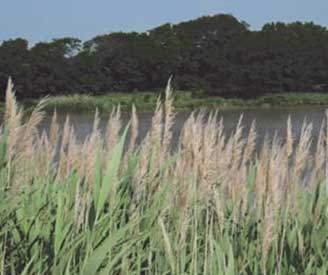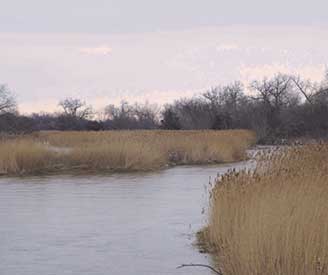Phragmites Common Reed
Phragmites australis
Description
State designated noxious weed; often forms dense stands, grows up to 20 ft., yellow-green leaves contrast with gray-green foliage of many native grasses; seed heads appear July through September. Native Phragmites exists in Nebraska; native have loosely attached leaf sheaths while the non-native species has tightly adhered leaf sheaths.
Habitat
Marshes, floodplains, ditches, ponds, waterways.
Location in Nebraska
Found throughout Nebraska, particularly along the Platte River.
Pathway of Introduction and Spread
Introduced from Europe for erosion control. Spreads by extensive rhizomes and seed dispersal. Can easily be inadvertently transported by boats and other recreational equipment such as duck blinds and decoys. Also spread by seed and rhizome fragmentation.
Impacts
Forms dense stands over very large areas, restricting water movement, trapping sediment and causing changes in water quality. Severe infestations will dominate waters in single monoculture. Adapts to many environments and competes with native vegetation.
Karie Decker, Nebraska Invasive Species Project
Nebraska Weed Control Association

